The Queen and the Scottish Parliament
- Published
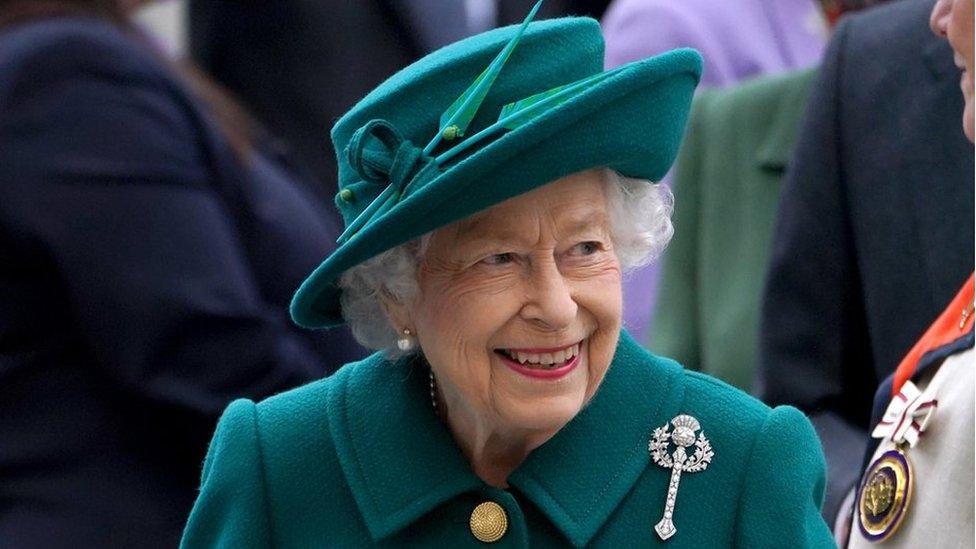
The Queen has attended each formal opening of the Scottish Parliament
Scottish political leaders are to pay tribute to the late Queen Elizabeth with a special motion of condolence at Holyrood.
King Charles will be in attendance for the speeches, led by First Minister Nicola Sturgeon.
The Queen visited the Scottish Parliament 10 times, including the formal opening of each term of parliament after the six Holyrood elections in 1999, 2003, 2007, 2011, 2016 and 2021.
She also attended special sessions for its tenth and twentieth anniversaries, as well as the opening of the Holyrood building and a sitting in Aberdeen to mark her Golden Jubilee.
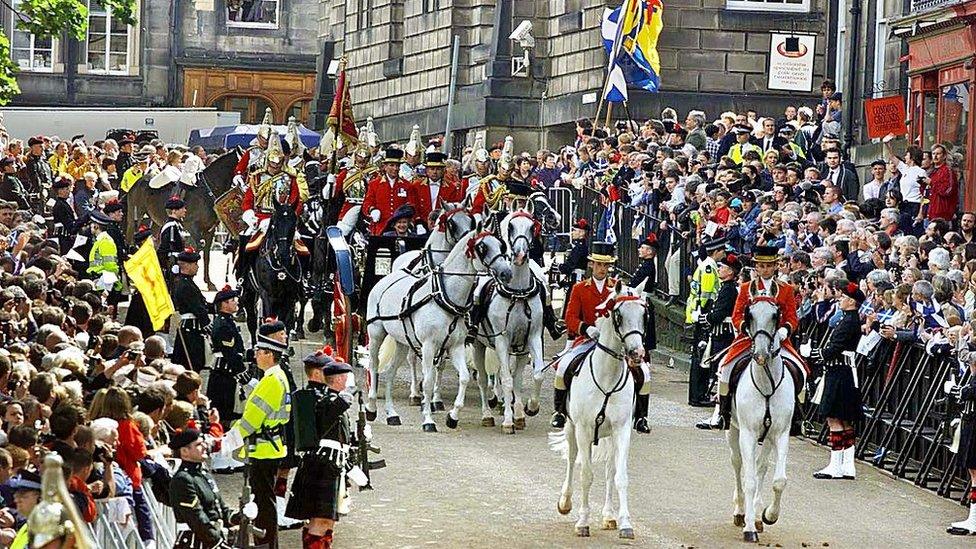
The Queen arrived at the new parliament in a horse-drawn carriage in 1999
The symbolic mace which sits in the Scottish parliament chamber was a gift from the Queen in 1999.
It is inscribed with the words integrity, compassion, wisdom and justice - which Presiding Officer Alison Johnstone said were "clearly reflected throughout Her Majesty's life".
The Queen herself described the opening of the parliament in 1999 as "rare moment" in the life of the nation, "when we step across the threshold of a new constitutional age".
And she stressed that she had "trust in the good judgement of the Scottish people", adding that she was "confident in the future of Scotland".
The opening ceremony saw the Queen arrive at the Assembly Hall - the home of the parliament while Holyrood was being built - in a horse-drawn carriage.
She was also accompanied by the Crown of Scotland, which dates back to the 15th century - its first use in a public ceremony since 1953.
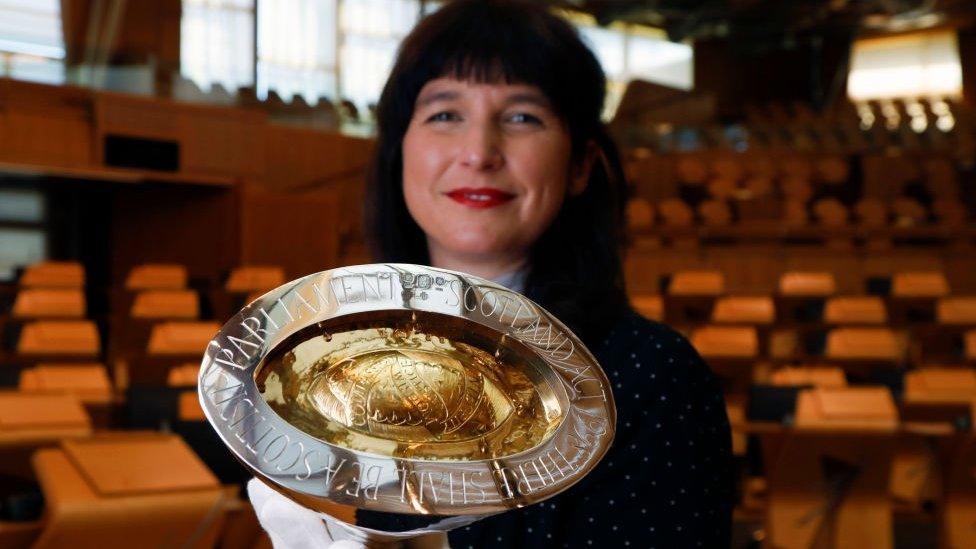
The parliament's mace was a gift from the Queen in 1999
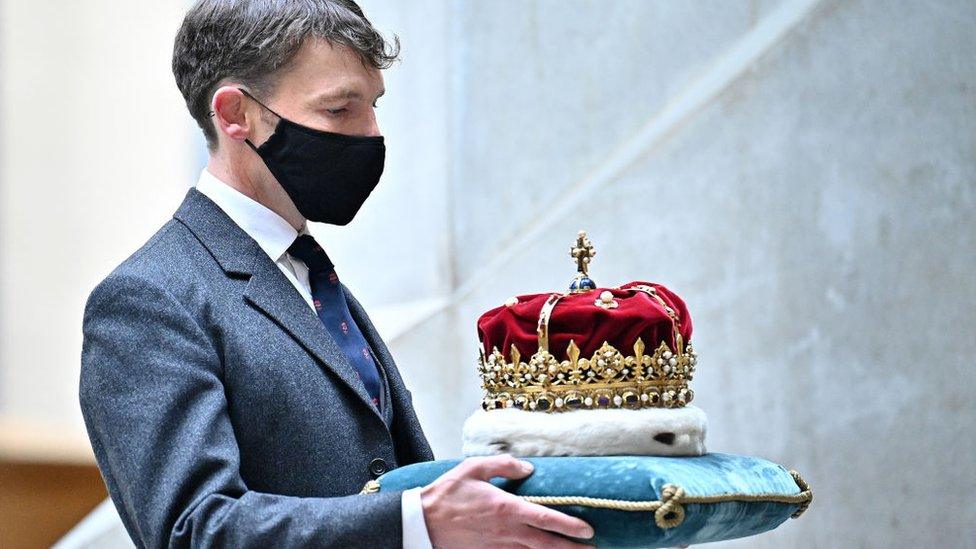
The opening of the Scottish Parliament brought the Crown of Scotland back into use at public ceremonies for the first time in decades
A special sitting of the parliament was held in Aberdeen in 2002 to mark the Queen's Golden Jubilee.
She praised the "volume of work" completed in the first three years of devolution, and the "spirit of participation that has been encouraged along the way".
She was gifted a rowan tree by Presiding Officer David Steel - in the Queen's words, an "ancient Scottish symbol of privacy, peace and sanctuary" - which she would go on to plant in the grounds of the new parliament building in 2004.
There was a procession down the Royal Mile to that new parliament, which sits across the road from the Palace of Holyroodhouse.
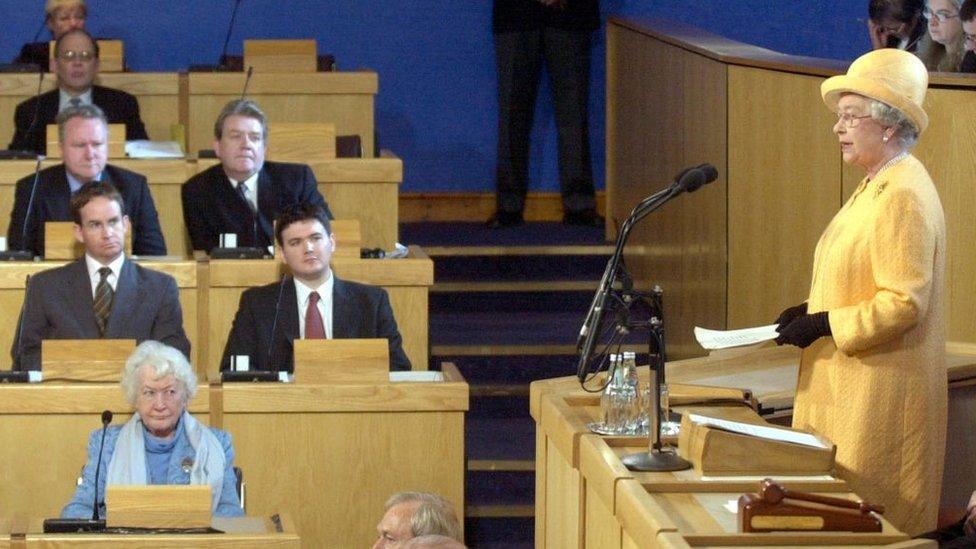
The Queen has addresed the parliament at its two venues in Edinburgh as well as here in Aberdeen in 2002
The Queen described the "remarkably open and transparent chamber" designed by Enric Miralles - albeit with a brief nod to its "difficult and controversial birth", with construction running years late and vastly over-budget.
But she said this was all the more reason to "ensure that with the energy, flair and determination for which Scots are renowned the world over, Holyrood comes to be seen as a landmark of 21st century democracy".
And she said MSPs were "pioneering new forms of working in close association with those you represent", saying this would "add distinctive Scottish values to the British democratic tradition".
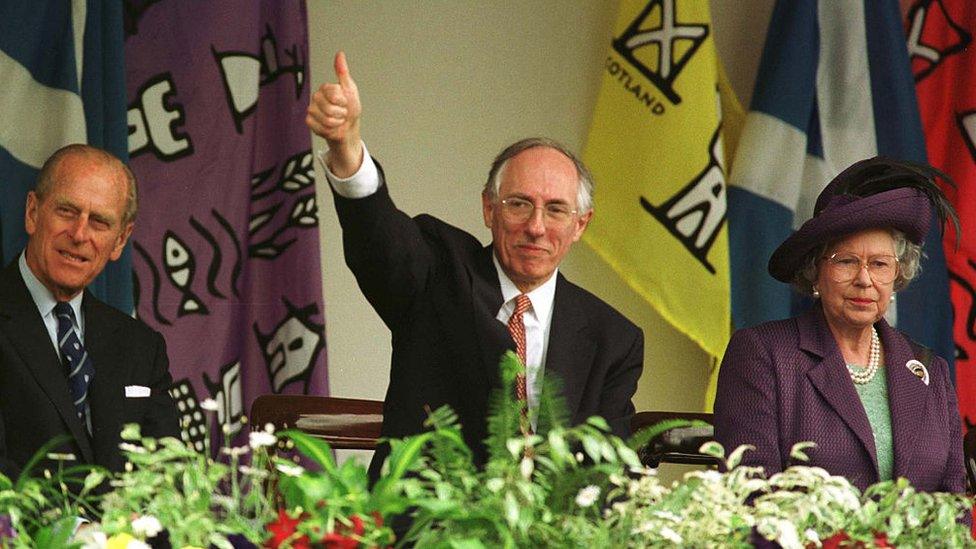
The Queen
While her early speeches focused on the future promise of the parliament, by the time the Queen visited for its tenth anniversary in 2009 there were achievements to look back on.
She said she had followed the progress of MSPs with "great interest", adding that she had been "struck by the spirit of engagement and innovation" shown by members.
And she said that had "firmly embedded this parliament as an institution at the heart of Scottish life and culture".


The Royal Household "gets" devolution. The palace could be said to show more sensitivity to the devolution settlement than successive Westminster Governments.
The Queen may have expressed her anxiety about self-government in her Silver Jubilee year in 1977, but when she opened the first Scottish Parliament in 300 years in 1999, she said she trusted the good judgement of the people of Scotland.
She flew to Holyrood to meet newly elected first ministers, rather than expect them to go to London; a sign of respect which was noted and appreciated by politicians.
It was the Queen who questioned what role the first minister would have when the G8 summit took place at Gleneagles in 2005. Jack McConnell was then deputed to greet the visiting heads of state as they arrived at the airport.
It is telling that First Minister Nicola Sturgeon will be among the welcoming party for King Charles III when he arrives in Edinburgh today.

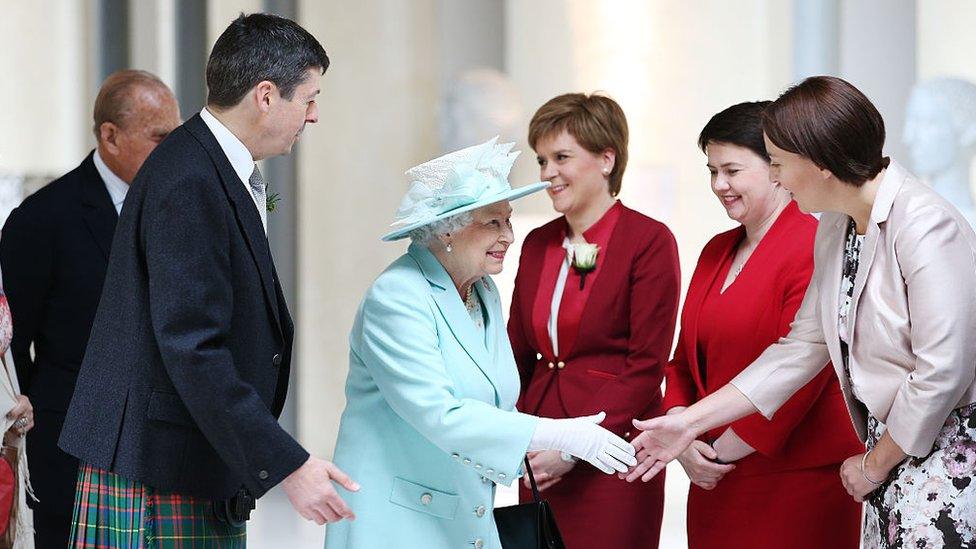
The Queen has met most of Scotland's leading politicians, as well as every first minister and presiding officer
This was a sentiment echoed a decade later, when the Queen said Holyrood "continues to be at the centre of Scottish life, an important forum to engage and unite diverse communities and a home for passionate debate and discussion".
She also paid tribute to parliamentary officials and staff who "help turn talk into action".
Unsung heroes were the focus when the Queen visited the parliament for what turned out to be the final time in 2021 too.
Each MSP was allowed to invite a guest from their constituency who had made "an extraordinary contribution" during the Covid-19 pandemic.
Presiding Officer Alison Johnstone said she was struck by the time the Queen took at the reception to meet all 129 of them, and to listen to their stories.
Her Majesty told MSPs: "It is often said that it is the people that make a place, and there are few places where this is truer than in Scotland."
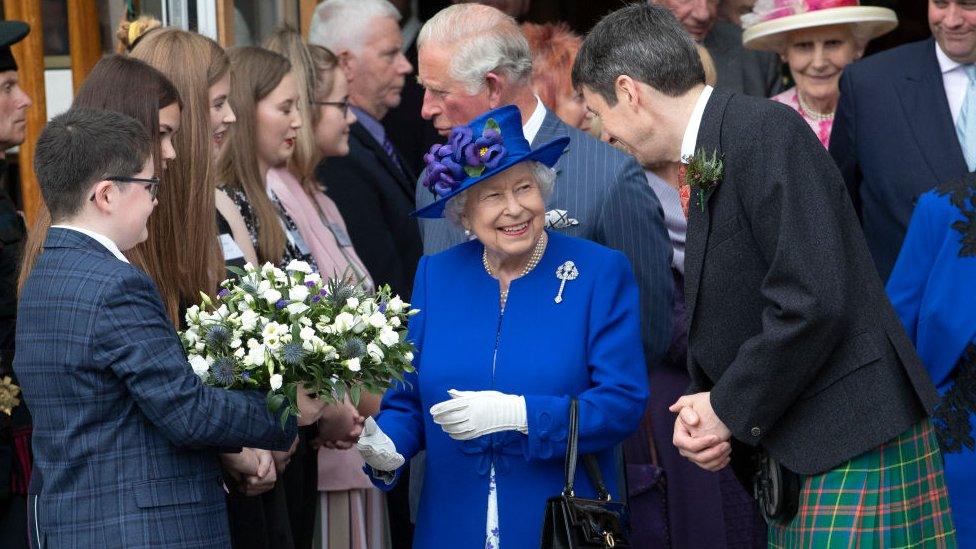
King Charles has also been a regular visitor to the parliament, having accompanied the Queen to the most recent opening event in 2021.
He was also present at the first opening in 1999, and attended the twentieth anniversary celebrations as well as receptions for the Princes Trust in 2005 and Armed Forces Day in 2011.
The King has also attended five Kirkings of the Scottish Parliament - a ceremony held at St Giles Cathedral after each election - having only missed one in 2011.
He will meet party leaders at Holyrood and hear their formal tributes to his mother in the chamber, before attending a reception in the parliament building.

